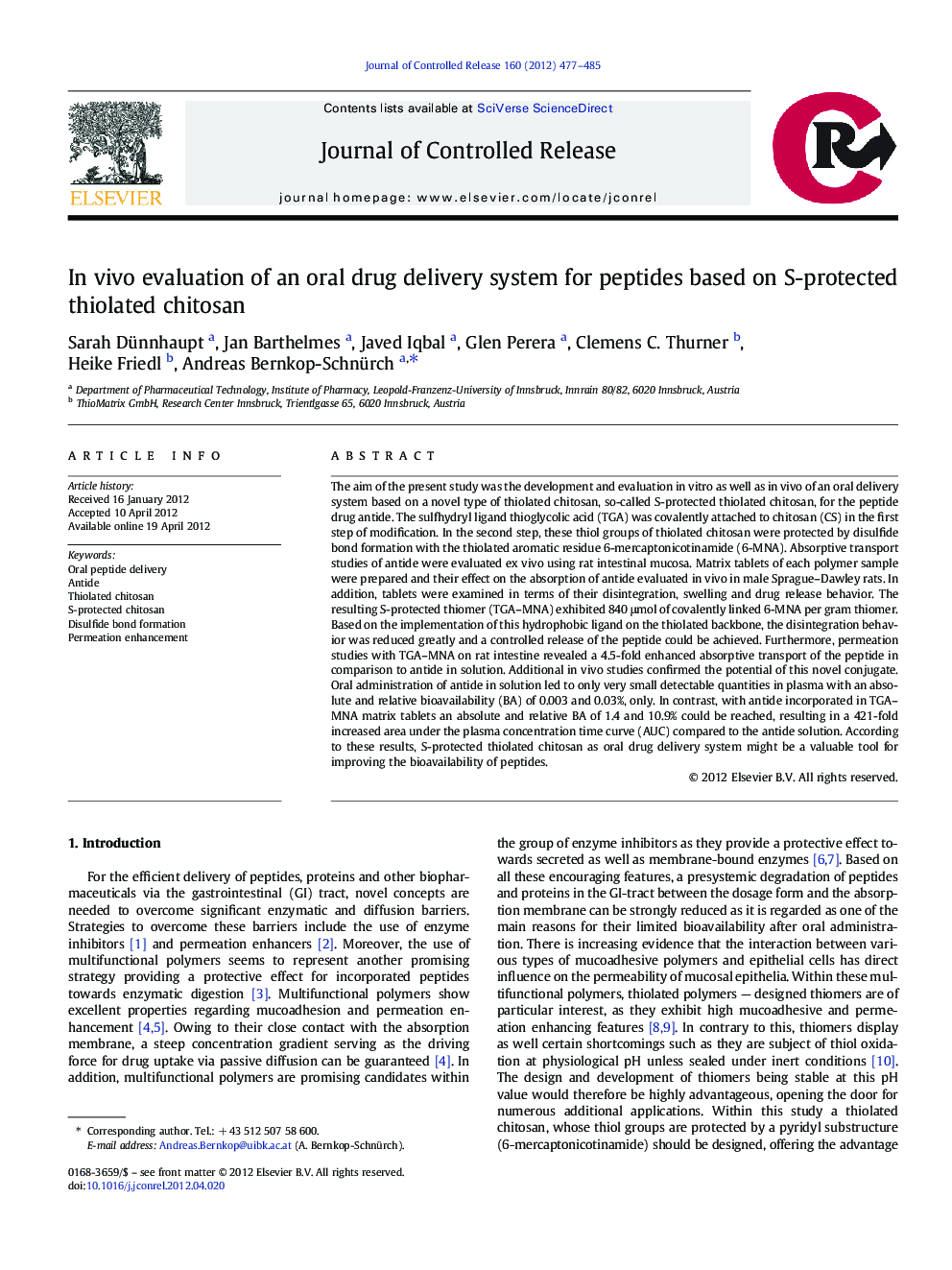| Article ID | Journal | Published Year | Pages | File Type |
|---|---|---|---|---|
| 1424495 | Journal of Controlled Release | 2012 | 9 Pages |
The aim of the present study was the development and evaluation in vitro as well as in vivo of an oral delivery system based on a novel type of thiolated chitosan, so-called S-protected thiolated chitosan, for the peptide drug antide. The sulfhydryl ligand thioglycolic acid (TGA) was covalently attached to chitosan (CS) in the first step of modification. In the second step, these thiol groups of thiolated chitosan were protected by disulfide bond formation with the thiolated aromatic residue 6-mercaptonicotinamide (6-MNA). Absorptive transport studies of antide were evaluated ex vivo using rat intestinal mucosa. Matrix tablets of each polymer sample were prepared and their effect on the absorption of antide evaluated in vivo in male Sprague–Dawley rats. In addition, tablets were examined in terms of their disintegration, swelling and drug release behavior. The resulting S-protected thiomer (TGA–MNA) exhibited 840 μmol of covalently linked 6-MNA per gram thiomer. Based on the implementation of this hydrophobic ligand on the thiolated backbone, the disintegration behavior was reduced greatly and a controlled release of the peptide could be achieved. Furthermore, permeation studies with TGA–MNA on rat intestine revealed a 4.5-fold enhanced absorptive transport of the peptide in comparison to antide in solution. Additional in vivo studies confirmed the potential of this novel conjugate. Oral administration of antide in solution led to only very small detectable quantities in plasma with an absolute and relative bioavailability (BA) of 0.003 and 0.03%, only. In contrast, with antide incorporated in TGA–MNA matrix tablets an absolute and relative BA of 1.4 and 10.9% could be reached, resulting in a 421-fold increased area under the plasma concentration time curve (AUC) compared to the antide solution. According to these results, S-protected thiolated chitosan as oral drug delivery system might be a valuable tool for improving the bioavailability of peptides.
Graphical abstractFigure optionsDownload full-size imageDownload high-quality image (81 K)Download as PowerPoint slide
